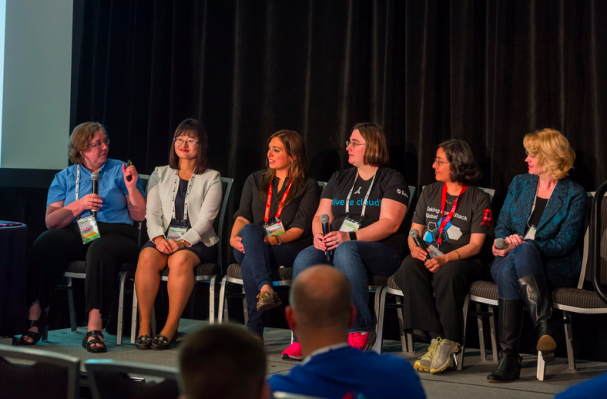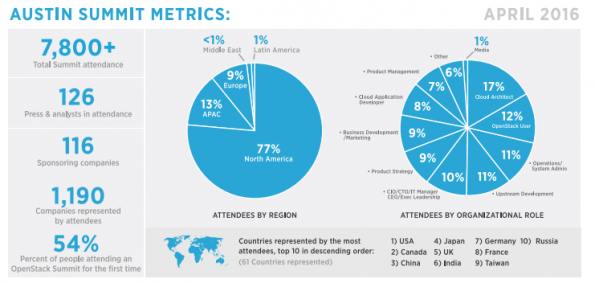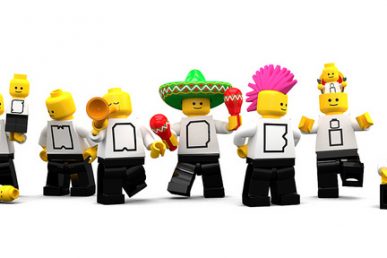OpenStack Summits are conferences for developers, users and administrators of OpenStack cloud software.
For the upcoming Summit, sessions and tracks are organized into five categories: Business and strategy, architecture and operations, developers, OpenStack Academy and The Forum.
The deadline for proposals is July 14, 2017 at 11:59 p.m. Pacific Time (July 15, 2017 at 6:59 UTC) Find your time zone here. If you’ve applied to speak at the Summit before, take note that there are some new rules for 2017. At the Sydney Summit, the new high-level themes are: business and strategy, careers in the cloud, technical presentations, and forum and collaborative sessions. You can also submit your talk in tracks ranging from architecture to working groups — see the complete list here.
The OpenStack Foundation typically receives more than 1,500 submissions for the OpenStack Summit. Proposals go from an idea on the back of a napkin to center stage in a few steps. After you’ve submitted the proposal, the OpenStack community reviews and votes on all of them.
For each track, a group of subject matter experts examine votes and orchestrates them into the final sessions. Track chairs see where the votes come from, so if a company stuffs the virtual ballot box to bolster a pitch, they can correct that imbalance. They also keep an eye out for duplicate ideas, often combining them into panel discussions.

Standing tall in the room session featuring (from left to right) Beth Cohen, Nalee Jang, Shilla Saebi, Elizabeth K. Joseph, Radha Ratnaparkhi and Rainya Mosher
Find your audience
Rapid growth of the OpenStack community means that many summit attendees are relative newcomers. At the previous, around 50-60 percent were first-time attendees.

Attendee data from the OpenStack Summit Austin
For each of those Summits, developers made up about 20 percent of attendees; product managers, strategists and architects made up roughly another quarter. Users, operators and sys admins were about 20 percent; CEOs, business development and marketers about 20 percent each with an “other” category coming in under 10 percent.
“Don’t make knowledge assumptions,” says Anne Gentle, who works at Cisco on OpenStack documentation and has powered through 13 Summits to date. But you don’t have to propose a talk for beginners, she adds, “be ready to tackle something deeply technical, don’t limit yourself.”
Consider the larger community, too. Your talk doesn’t necessarily have to be about code, says Niki Acosta of Cisco, adding that recent summit panels have explored gender diversity, community building and startup culture.
Set yourself up for success
There are some basic guidelines for getting your pitch noticed: use an informative title (catchy, but not cute — more below), set out a problem and a learning objective in the description, match the format of your talk to a type of session (hands-on, case study), make sure the outline mirrors what you can actually cover in the time allotted and, lastly, show your knowledge about the topic.
Be relevant
Remember that you’re pitching for an OpenStack Summit, not a sales meeting or embarking on a public relations tour. Be honest about who you work for and push your pitch beyond corporate puffery.
Diane Mueller, who works at Red Hat on OpenShift, spells it out this way. “I have corporate masters and we have agendas about getting visibility for our projects and the work we’re doing. But the Summit is all about OpenStack.” Instead of saying “give me an hour to talk about platform-as-a-service,” highlight an aspect of your business that directly relates to OpenStack. “It may be about how you deploy Heat or Docker,” she adds, but it’s not a vendor pitch.
While you want to keep the volume on corporate-speak low, all three speakers agreed that the bio is the place to get loud. Make sure to highlight your knowledge of OpenStack and any contributions you’ve made to the community. “Contributors get respect and priority,” Mueller says. “So whatever you’ve done — organizing, documentation, Q/A, volunteering at events — make sure you mention it.”
Be clear and complete
State your intent clearly in the abstract, title and description. The abstract should highlight what the “attendee will gain, rather than what you’re going to say,” Acosta says. “Focus on the voter and the attendee rather than making it all about you.” If English is your second language, proofread closely before submitting. If you’re struggling with the writing, make sure to add links for background, complete your bio and upload a photo.
Gentle notes that although the team regularly gets pitches from around the world and works with speakers whose native tongue isn’t English, making your proposal as clear as possible goes a long way to getting it accepted. For examples, check out the sample proposals at O’Reilly.
“I’ve read some really bad abstracts,” says Mueller. “The worst ones are just one line that says, ‘I’m going to talk about updates to Project X.’”
Nervous? Don’t fly solo
If you’ve got great ideas for a talk but hate the thought of standing up alone in front of an audience, there are a few workarounds. Try finding a co-presenter, bringing a customer or putting together a panel.
“Reach out to people who have the same role as you do at different companies,” says Acosta. “There’s nothing more exciting than a panel with competitors who have drastically different methodologies and strategies.”
Toot your own horn
Make your title captivating — but not too cute — and social-media ready. Voting for your proposal and attendance at your session often depend on the strength of the title.
“Tweet early, tweet often,” says Gentle. “I always get a little nervous around voting time, that’s natural. But trust in the process.”
Start stumping for your proposal as soon as you submit it. Your boss, the PR team and product manager should all be on board; letting your company know early may be key to getting travel approved. Network with your peers to get the word out, too. Finally, remember to vote for yourself. You don’t want to miss out by just one vote.
And, if you don’t get accepted this time, keep trying.
The rate of rejection is “quite high,” Acosta admits. “Don’t be discouraged. It doesn’t mean that your session topic wasn’t good. It just means that yours didn’t make it this time.”
Photos: lead CC-licensed, thanks M1ke-Skydive on Flickr; Standing tall in the room session at the Vancouver Summit courtesy of the OpenStack Foundation.
- Demystifying Confidential Containers with a Live Kata Containers Demo - July 13, 2023
- OpenInfra Summit Vancouver Recap: 50 things You Need to Know - June 16, 2023
- Congratulations to the 2023 Superuser Awards Winner: Bloomberg - June 13, 2023

)










